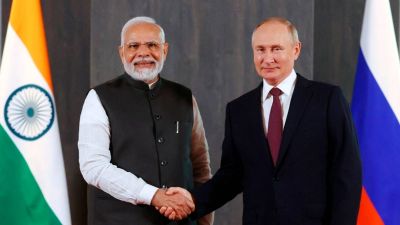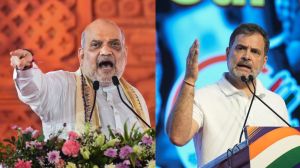THE MATH BEHIND THE BUYOLOGY
When Michael Lewis wrote Moneyball,which described how a group of stats nerds revolutionised Major League Baseball,he couldnt have imagined what he had set in motion.
When Michael Lewis wrote Moneyball,which described how a group of stats nerds revolutionised Major League Baseball,he couldnt have imagined what he had set in motion. Twelve years after his books publication,It isnt just Hollywood that has co-opted his work but Bollywood too.
On a lighter note, said Shilpa Shetty of Rajasthan Royals fame,during a recent interview,I’d like to believe that Moneyball is based on us.
In Moneyball,the Oakland As,a team of misfits that nobody else wants,consistently outperform teams with vastly bigger budgets. The 2008 Rajasthan Royals were a group of modest names who defeated teams with pricier stars on their way to a classic underdog triumph.
But the similarities end there.
Moneyballs central premise was that baseball had for too long trusted in the gut feel of scouts and coaches in spotting talent. Oakland,under general manager Billy Beane,instead drafted players based on in-depth statistical analysis known as sabermetrics.
Instead of the chiselled athletes that tended to attract scouts,Oakland stockpiled players,no matter how slow or pudgy,based just on their ability to generate unconventional numbers like on-base percentage and slugging percentage.
Moneyball fired the collective imagination of the sporting world. In football,for instance,midfielders with a good pass success rate suddenly became very important. Direct homage arrived with the publication of Soccernomics,which authors Simon Kuper and Stefan Szymanski described as footballs Moneyball. Damien Comolli,Liverpools director of football,is known to apply Soccernomics principles to buying and selling players.
Statistics have always played a role in cricket. But to most people,their use is restricted to individual records,which only tell you that Thilan Samaraweera has a better Test average than Viv Richards. Where are the Moneyball stats,and who uses them?
S Ramakrishnan,better known as Ramky,has spent over a decade with the Indian team,starting out as video analyst but soon realising that his data could be put to wider use. Our whole business is built around Moneyball, Ramky says. That phrase didnt exist when I started,but for the last 12 years,it’s been all about looking at stats differently.
Ramkys company,Sports Mechanics,has provided analytical support to nearly every IPL team. All four seasons so far,the champions were our clients, he says.
Ramky says that insiders look at players performances in a markedly different way to casual spectators.
Performance should be mapped to team interest, he says. Imagine a bowler asked to bowl stump-to-stump,bowl dot balls,and the other guy gets a lot of wickets. If you judge both on wickets taken,you are penalising the first guy for being a team player.
Players and coaches are increasingly reliant on tools like Ramkys Performance Efficiency Index. We built it around variables like over blocks,wickets,run-rate,dot balls,boundaries and gave different weightages, he says. Batsmen,for example,are penalised more for dot balls during a powerplay.
Analysts make tactical decisions too. Often,it’s someone in the dug-out who interprets game data and suggests that we need 40 runs in the next five overs, Ramky says. The dugout has no personal interest. Sometimes,players have a personal interest that could interfere with the team interest — more so in the IPL,because of their market value.
Video analysts are a common sight even at Ranji matches,but do IPL teams use their data in the pre-season,when they list their auction targets?
Most teams have looked into it. This is a business,and you have to spend your money wisely, says Ramky. We give them (franchises) suggestions before the auction,but after that it’s about how they execute. They can use our data,but there is definitely a gut feel component too.
Judging by the millions spent on the Ravindra Jadejas and Vinay Kumars — good players,for sure,but still far from proven at international level — gut feel seems to play an inordinate role.
Some teams beg to differ. Shilpa Shettys Rajasthan,unsurprisingly,claim to adhere to the Moneyball approach.
We have used it extensively while picking players,long before the movie released, says Raghu Iyer,Rajasthans CEO. We had all read the book.
Eye for a bargain
During the 2008 auction,when most franchises chased superstars,Rajasthan hunted for bargains. Yusuf Pathan was then just a bits-and-pieces domestic player. Shane Watson was perpetually crocked. Sohail Tanvir had done well in the World T20,but other franchises went for more established names. All threewho together cost $700,000,the equivalent of one Gilchristcontributed decisively to Rajasthans triumph.
Having tasted success with it,Rajasthan stuck to this approach. We went for Dimitri Mascarenhas and Shaun Tait in the second season,and later for Johan Botha, says Iyer. These were value for money buys to the core.
Value for money,yes,but none of them was discovered using the cricketing equivalent of sabermetrics,so calling it Moneyball would be a stretch.
But Rajasthan claim to have fought traditional wisdom in other ways too. Warne was 38 when he first captained the Royals,and was the first of many 30-somethings that Rajasthan went on to purchase. This seasons signings include Brad Hodge,37,and Brad Hogg,41.
Hodge and Hogg played well during the Big Bash. Hodge was very successful during the Bangladesh Premier League (BPL) as well,and is extremely fit, says Iyer. The IPL has disproved the myth of T20 cricket being a young man’s game. You look at Warnie,Gilchrist,Dravid. They know exactly how to play at their peak for 40 overs.
This might be true,but it also helps that Warne,Gilchrist and Dravid are certified superstars. Buying older,lesser-known players,is fraught with risk,as Rajasthan themselves discovered in 2009,when they shelled out $650,000 on 34-year-old South African all-rounder Tyron Henderson. A strong showing for Middlesex in the 2008 Twenty20 Cup brought him to notice,but he played only two matches for the Royals,suggesting that they might have spent imprudently on a journeyman with one eye-catching performance behind him.
In Soccernomics,Kuper and Szymanski drew up a list of rules for transfers. One of these was Avoid stars of recent international tournaments, warning against the sort of deal that saw the little-known Kleberson moving to Manchester United after winning the 2002 World Cup with Brazil. Henderson was,in some ways,IPLs Kleberson.
Another Soccernomics rule suggests that clubs stay wary of certain nationalities. Dutch and Brazilian players,it argues,are typically overpriced. Australia,thanks to their recent position as crickets dominant force and the reputation of their domestic game,provide the IPL parallel.
How else would you explain Bangalore spending more on Cameron White than Dale Steyn,or Kolkata more on David Hussey than Umar Gul,during the 2008 auction?
Strikers,Soccernomics says,are often overpriced. Think Zlatan Ibrahimovic and Fernando Torres. The IPL equivalent could be fast bowlers who have played for India. Three of 2008s ten most expensive players were Ishant Sharma,Irfan Pathan and RP Singh. The trend has continued all the way to this years auction,where Bangalore splashed a million dollars on Vinay Kumar.
Vinay is a son of the soil,and he’s doing well. Him playing for Bangalore is an ideal scenario, says Shishir Hattangadi,who has served as director at Deccan Chargers and Mumbai Indians. Plus,you can only play four foreigners,so the demand for Indian players is higher.
Problem children
During the 2012 auction,Rajasthan were the only team to bid for Sreesanth,whose injury concerns and chequered personal history saw other teams back off. Having picked him up for base price,they landed a bowler of similar skill to Vinay at less than half the price.
This move adhered to another Soccernomics rule: Buy players with personal problems,then help them deal with their issues. Typically,problem players tend to attract fewer bidders,and come cheaper.
Bangalore took advantage of this fact too,when they flew in the hitherto unwanted Chris Gayle to replace the injured Dirk Nannes last season,for a price that couldnt have exceeded the $650,000 they spent on Nannes. That,for an eventually season-defining move,was a steal.
It wasnt until Oakland put results on the board that other teams took notice of the nerds in their dugout. Now,the use of sabermetrics has percolated into nearly every Major League team,and the league table once again reflects baseballs financial imbalances.
With a spending cap levelling the IPL field,clever buying strategies can make an even bigger difference. The IPL is yet to find its Oakland,but when it happens,that teams success might last even longer.












